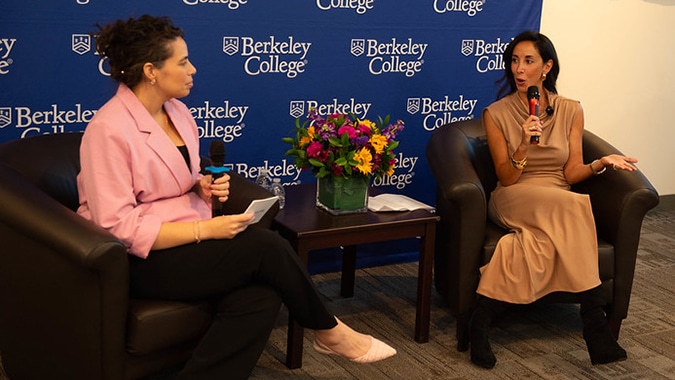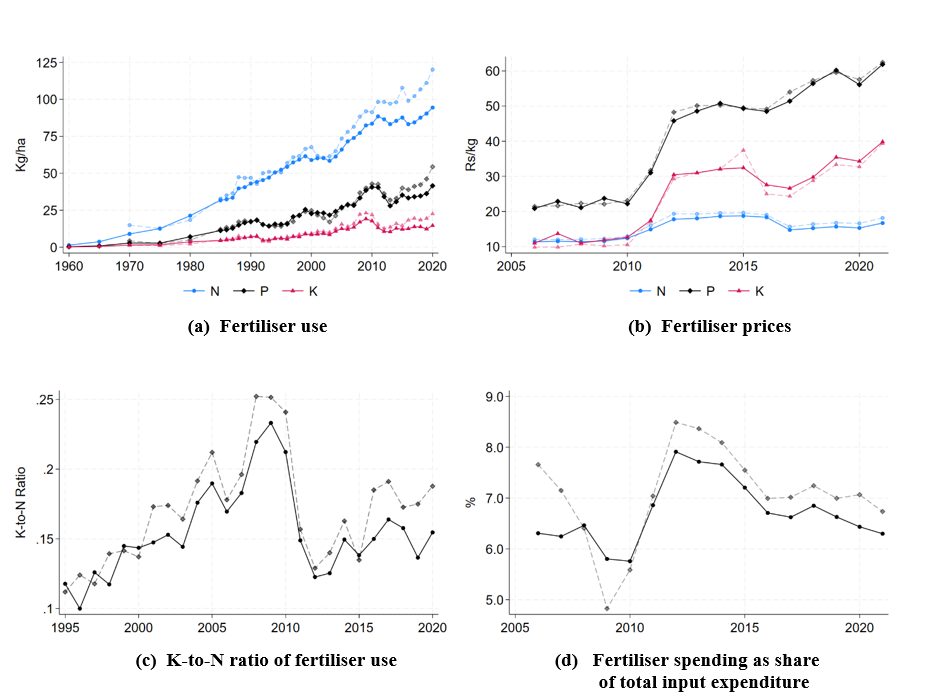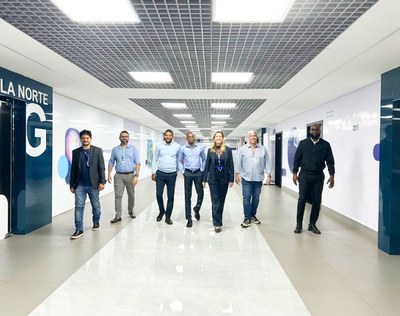Microsoft Pledges $4B for AI Education, Teacher Training – GovTech

Report on Microsoft’s AI Education Initiative and its Alignment with Sustainable Development Goals
Executive Summary
Microsoft has announced a strategic commitment of $4 billion, channeled through its new Microsoft Elevate initiative, to advance global artificial intelligence (AI) education and training. This five-year plan aims to provide over 20 million individuals with AI-related credentials, directly addressing several United Nations Sustainable Development Goals (SDGs). The initiative represents a significant corporate effort to align technological advancement with inclusive and sustainable development, primarily targeting SDG 4 (Quality Education), SDG 8 (Decent Work and Economic Growth), SDG 9 (Industry, Innovation, and Infrastructure), and SDG 10 (Reduced Inequalities).
Initiative Details: Microsoft Elevate
Microsoft Elevate is positioned as an expansion of the company’s philanthropic efforts, designed to manage the societal transition into the age of AI. The core components of the initiative are:
- Financial Commitment: A $4 billion investment over five years, comprising cash, technology, and training resources.
- Primary Objective: To equip more than 20 million people globally with certifiable AI skills.
- Operational Focus: To upskill the global workforce, preparing individuals across all industries for AI-integrated jobs and fostering a new generation of AI-literate professionals.
Alignment with SDG 4: Quality Education
The program’s central mission is to provide inclusive and equitable quality education and promote lifelong learning opportunities, which is the essence of SDG 4. It contributes to this goal by:
- Enhancing Technical and Vocational Skills (Target 4.4): By offering pathways to AI credentials, the initiative directly increases the number of adults with relevant skills for employment, decent jobs, and entrepreneurship.
- Promoting Lifelong Learning: The focus on upskilling the existing workforce underscores a commitment to continuous education, which is critical in a rapidly evolving technological landscape.
- Supporting Educators: A key component involves training teachers, enabling them to integrate AI concepts into curricula and prepare students for the future.
- Ensuring Relevant Learning Outcomes (Target 4.7): The program aims to ensure learners acquire the knowledge and skills needed to promote sustainable development through technological proficiency.
Impact on SDG 8: Decent Work and Economic Growth
Microsoft’s initiative is a direct response to the transformative impact of AI on the labor market. It seeks to foster full and productive employment and decent work for all, in line with SDG 8.
- Proactive Workforce Development: The program is designed to mitigate fears of job displacement by proactively preparing workers for new and altered roles, rather than focusing on automation as a replacement for human labor.
- Boosting Economic Productivity (Target 8.2): By creating a more skilled workforce, the initiative aims to help economies achieve higher levels of productivity through technological upgrading and innovation.
- Addressing Youth Employment (Target 8.6): The focus on providing credentials will help reduce the proportion of youth not in employment, education, or training by aligning their skills with market demands.
Contribution to SDG 9 (Industry, Innovation) and SDG 10 (Reduced Inequalities)
The initiative supports the development of resilient infrastructure and inclusive industrialization while aiming to reduce digital and economic divides.
- Fostering Innovation (SDG 9): A globally skilled workforce is essential for driving the innovation that AI promises. This educational investment underpins the technological advancement and industrial competitiveness that SDG 9 promotes.
- Reducing Inequalities (SDG 10): By aiming for broad accessibility, the program has the potential to empower individuals from diverse economic and social backgrounds. Providing access to high-demand skills can promote social and economic inclusion (Target 10.2) and help bridge the growing digital divide.
- Building a Foundation for a Just Transition: The initiative is framed as a crucial step in ensuring that the benefits of AI are distributed equitably, preventing the technology from exacerbating existing inequalities.
Conclusion: A Partnership for the Goals (SDG 17)
Microsoft’s $4 billion pledge through the Elevate initiative exemplifies a multi-stakeholder partnership (SDG 17) in action. It represents a private sector entity mobilizing its resources to address global challenges in education and employment. While aligned with Microsoft’s commercial interests in a burgeoning AI market, the program’s structure and stated goals are fundamentally linked to achieving a more sustainable and equitable future as outlined in the Sustainable Development Goals. The success of this initiative will be measured not only by the number of credentials earned but by its tangible impact on creating inclusive opportunities and fostering sustainable economic growth worldwide.
SDGs Addressed in the Article
- SDG 4: Quality Education
- SDG 8: Decent Work and Economic Growth
- SDG 9: Industry, Innovation, and Infrastructure
- SDG 17: Partnerships for the Goals
Specific SDG Targets Identified
SDG 4: Quality Education
-
Target 4.4: By 2030, substantially increase the number of youth and adults who have relevant skills, including technical and vocational skills, for employment, decent jobs and entrepreneurship.
Explanation: The article’s central theme is Microsoft’s initiative to help “more than 20 million people earn AI credentials.” This directly addresses the need to equip adults with relevant technical skills (AI) for the modern workforce and “prepare workers for new jobs.” -
Target 4.c: By 2030, substantially increase the supply of qualified teachers, including through international cooperation for teacher training.
Explanation: The initiative explicitly includes “training teachers” as a core component of its AI education pledge, directly contributing to increasing the supply of educators qualified to teach advanced technological skills.
SDG 8: Decent Work and Economic Growth
-
Target 8.2: Achieve higher levels of economic productivity through diversification, technological upgrading and innovation.
Explanation: The article discusses upskilling the workforce to use AI, which is a key form of “technological upgrading and innovation.” The goal is to enhance productivity and “help us do more and do it better,” which contributes to economic growth. -
Target 8.6: By 2020, substantially reduce the proportion of youth not in employment, education or training.
Explanation: Although the target year has passed, the goal remains relevant. By providing training and credentials in a high-demand field like AI, the initiative aims to ensure people, including youth, are prepared for employment and are not left out of the evolving labor market, thus reducing the number of people not in education or training.
SDG 9: Industry, Innovation, and Infrastructure
-
Target 9.c: Significantly increase access to information and communications technology.
Explanation: Microsoft’s pledge includes donating “technology and training.” This directly increases access to advanced information and communications technology (AI tools and platforms) for a large population. The article also mentions Microsoft’s $80 billion investment in building data centers, which is the “infrastructure” required for this innovation.
SDG 17: Partnerships for the Goals
-
Target 17.17: Encourage and promote effective public, public-private and civil society partnerships.
Explanation: The article describes a large-scale initiative by a private company, Microsoft, to advance global education and workforce readiness. This “$4 billion” commitment through “Microsoft Elevate” is a clear example of a public-private partnership aimed at achieving societal goals.
Indicators for Measuring Progress
- Number of people with technical/vocational skills: The article explicitly states a goal of helping “more than 20 million people earn AI credentials.” This provides a direct, quantifiable indicator to measure progress towards Target 4.4.
- Financial resources mobilized for education and training: The article mentions a specific financial commitment of “$4 billion worth of cash, technology and training.” This serves as a key input indicator for the partnership (Target 17.17) and the educational initiative (Target 4.4).
- Number of teachers trained: The initiative’s goal of “training teachers” implies that the number of educators who receive this training is a measurable indicator of progress towards Target 4.c.
SDGs, Targets, and Indicators Summary
| SDGs | Targets | Indicators Identified in Article |
|---|---|---|
| SDG 4: Quality Education |
4.4: Increase the number of youth and adults with relevant skills for employment.
4.c: Increase the supply of qualified teachers through training. |
Number of people earning AI credentials (Goal: 20 million).
Number of teachers trained in AI (Implied). |
| SDG 8: Decent Work and Economic Growth |
8.2: Achieve higher economic productivity through technological upgrading.
8.6: Reduce the proportion of youth not in employment, education or training. |
Adoption of AI skills in the workforce to enhance productivity.
Number of people gaining credentials to enter or remain in the workforce. |
| SDG 9: Industry, Innovation, and Infrastructure | 9.c: Increase access to information and communications technology. |
Provision of technology and training to 20 million people. Investment in data center infrastructure ($80 billion). |
| SDG 17: Partnerships for the Goals | 17.17: Encourage and promote effective public-private partnerships. | Value of resources mobilized by the private sector (Microsoft) for education ($4 billion). |
Source: govtech.com

What is Your Reaction?
 Like
0
Like
0
 Dislike
0
Dislike
0
 Love
0
Love
0
 Funny
0
Funny
0
 Angry
0
Angry
0
 Sad
0
Sad
0
 Wow
0
Wow
0





/https://media.globalcitizen.org/ea/9e/ea9e1a08-9cc4-472e-a0a7-57a76f7c1e06/screenshot_2025-11-06_at_101647.png?#)












![Architects use comics and humour to rethink sustainable cities [Interview] – Mongabay-India](https://imgs.mongabay.com/wp-content/uploads/sites/30/2025/11/06135611/1761635108000-768x511.jpeg?#)




























































